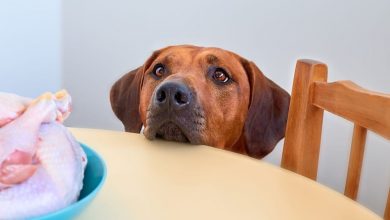How To Stop My Dog From Moving Her Puppies

1. Introduction
It is not uncommon for a mother dog to move her puppies from one nest to another. While this behavior is natural, it can be problematic if the mother dog is moving her puppies too often or in an unsafe area. In this article, we will discuss why a mother dog may move her puppies, the signs that she is doing so, and how to prevent it from happening.
2. Reasons why a Dog may Move her Puppies
There are several reasons why a mother dog may move her puppies. One of the most common reasons is because she feels that the current nesting area is not safe or secure enough for her litter. She may also be looking for a more comfortable area that provides better protection from predators or extreme weather conditions. Additionally, she may be trying to find an area with more food and water sources for her puppies.
3. Signs that your Dog is Moving her Puppies
If you suspect that your dog is moving her puppies, there are several signs you can look out for. For example, if you notice that your dog is constantly leaving the area and coming back with different puppies, this could be a sign that she has moved them somewhere else. Additionally, if you notice that the puppies are no longer in the same spot where you first saw them, then this could also indicate that they have been moved.
4. Preventing your Dog from Moving her Puppies
The best way to prevent your dog from moving her puppies is to provide a safe and secure environment for them. This means making sure that their nesting area is free from any potential dangers such as predators or extreme weather conditions. Additionally, it’s important to provide plenty of food and water sources in the area so your dog won’t feel the need to move them elsewhere in search of sustenance.
5. Confining your Dog to Limit Movement of the Puppies
In some cases, it may be necessary to confine your dog in order to limit her movement of the puppies. This can be done by using a crate or pen in which your dog can stay while she takes care of her litter without being able to move them around too much. It’s important to make sure that she has plenty of food, water, and bedding in the confined area so she doesn’t feel the need to move them elsewhere in search of these things.
6. Creating a Safe Environment for the Pups
In addition to confining your dog, it’s important to create a safe environment for the pups as well. This means making sure there are no potential dangers such as predators or extreme weather conditions near their nesting area. It’s also important to provide plenty of food and water sources so they don’t have to rely on their mother for sustenance all the time.
7. Providing Adequate Nutrition for the Mother and Puppies
It’s essential that both the mother and puppies are provided with adequate nutrition in order to ensure their health and wellbeing. This means providing high-quality food sources such as meat-based proteins and carbohydrates as well as vitamins and minerals that are necessary for their growth and development. Additionally, it’s important to provide plenty of clean drinking water at all times so they don’t become dehydrated or suffer from other health issues related to lack of hydration.
8. Ensuring Proper Hygiene and Cleanliness of the Nesting Area
It’s also important to ensure proper hygiene and cleanliness of the nesting area in order to prevent any potential health issues from arising due to unsanitary conditions. This means regularly cleaning up any waste materials such as feces or urine as well as providing fresh bedding material when needed. Additionally, it’s important to keep an eye out for any signs of infection or illness in both the mother and puppies so treatment can be sought out immediately if necessary.


